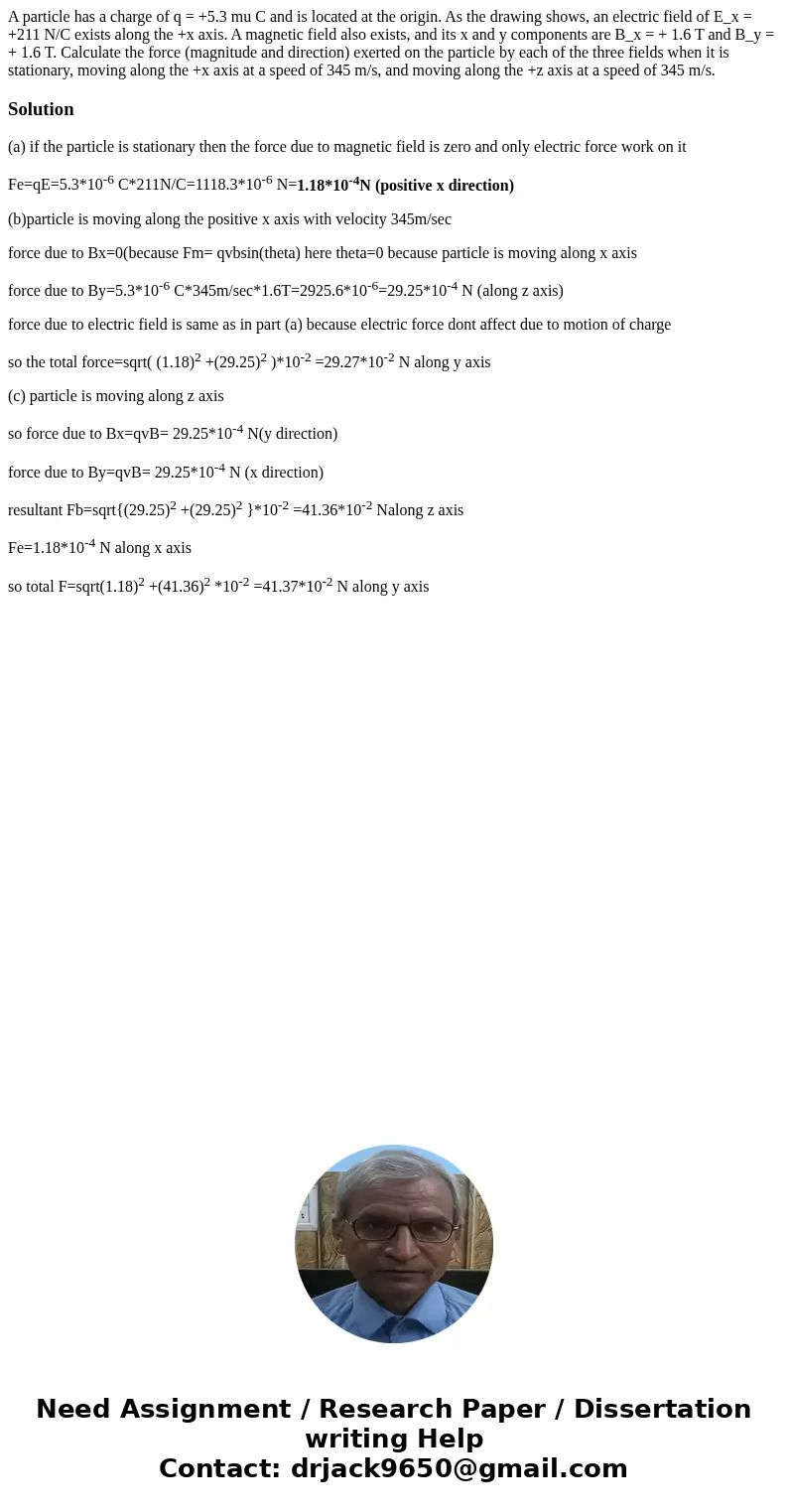A particle has a charge of q 53 mu C and is located at the
Solution
(a) if the particle is stationary then the force due to magnetic field is zero and only electric force work on it
Fe=qE=5.3*10-6 C*211N/C=1118.3*10-6 N=1.18*10-4N (positive x direction)
(b)particle is moving along the positive x axis with velocity 345m/sec
force due to Bx=0(because Fm= qvbsin(theta) here theta=0 because particle is moving along x axis
force due to By=5.3*10-6 C*345m/sec*1.6T=2925.6*10-6=29.25*10-4 N (along z axis)
force due to electric field is same as in part (a) because electric force dont affect due to motion of charge
so the total force=sqrt( (1.18)2 +(29.25)2 )*10-2 =29.27*10-2 N along y axis
(c) particle is moving along z axis
so force due to Bx=qvB= 29.25*10-4 N(y direction)
force due to By=qvB= 29.25*10-4 N (x direction)
resultant Fb=sqrt{(29.25)2 +(29.25)2 }*10-2 =41.36*10-2 Nalong z axis
Fe=1.18*10-4 N along x axis
so total F=sqrt(1.18)2 +(41.36)2 *10-2 =41.37*10-2 N along y axis

 Homework Sourse
Homework Sourse